Mauritius reopens to foreign visitors after coronavirus shutdown
The Indian Ocean holiday destination fully reopens to rebuild its vital tourism industry after long months of isolation.
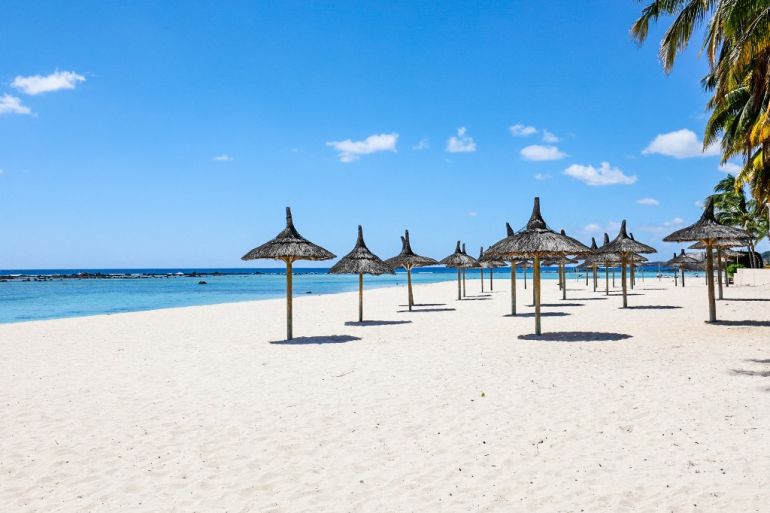
The island nation of Mauritius has fully opened its doors to international visitors, hoping to rebuild its key tourism industry after long months of isolation because of the coronavirus pandemic.
The move on Friday was greeted with a mixture of optimism, relief and some caution in the Indian Ocean paradise.

Keep reading
Vaccine tourism: read the fine print, warn travel agents vaccine tourism: read the fine print, ..., covid-19 tourism hit could top $4 trillion: un covid-19 tourism hit could top $4 ..., photos: how egypt papyrus makers are keeping the tradition alive photos: how egypt papyrus makers are ....
“This reopening is inevitable because 100,000 families depend on tourism to live,” Deputy Prime Minister and Tourism Minister Steven Obeegadoo said at a news conference on Thursday.
He said 68 percent of the 1.3 million population had been fully vaccinated and 89 percent had received at least one dose – among the highest rates in the world.
Sheila Figaro, who specialises in handicrafts including making traditional Mauritian dolls, gave a sigh of relief at the border opening.
“Without the tourists, we are nothing. I can’t wait for work to return so we can start earning a living again like we did before COVID-19,” the 49-year-old said.

The first planeloads of tourists were arriving from Dubai, Paris and London on Friday and will have to meet certain COVID-19 testing requirements during their stay.
Obeegadoo said the country had “prepared well” for the return of international visitors.
“At the same time, increased vigilance will be required to reduce the risk of further contamination,” he said.
The idyllic holiday destination, renowned for its spectacular white sandy beaches and turquoise waters, had partly reopened to vaccinated visitors in July for the first time since the pandemic emerged in early 2020.
But they had to remain in “resort bubbles” for 14 days before being allowed to venture further afield.
Mauritius was removed from the United Kingdom’s red list last month, although the United States Centers for Disease Control added Mauritius to its list of high-risk COVID-19 destinations, saying travellers should “avoid” the country.
According to figures on the Africa CDC website, Mauritius had recorded 13,685 cases of the coronavirus as of September 26, but the weekly average has dropped sharply from an August peak.
In mid-July, when the country partially reopened, the number of infections was at 2,190.
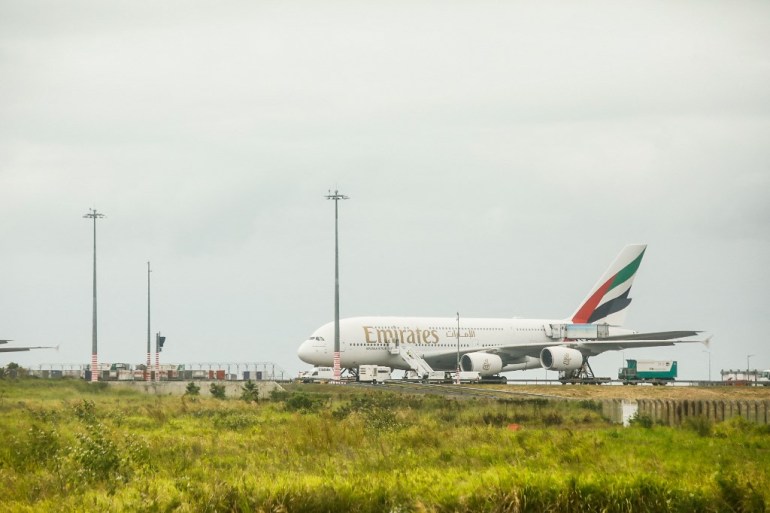
A briefing note to the AFP news agency put the number of COVID-related deaths at 71 as of September 26.
On Wednesday, the government announced it had injected $280m to shore up the national flag carrier Air Mauritius, which had been put into voluntary administration in April last year because of the pandemic.
Tourism share
Before the pandemic hit in March 2020, the tourism and hospitality industry raked in about 24 percent of gross domestic product (GDP) and employed nearly a quarter of the workforce.
Boat skipper Jean-Alain Fanchette, 51, said he was happy to be able to resume operating tourist trips.
“We will then be able to feed our families,” he said. “But various problems are on our minds: Will we really have customers? Then how do we observe the protocol on board, like physical distancing? It will be really difficult.”
François Eynaud, executive director of Sun Resorts, which owns or manages several top hotels in Mauritius, said he was aware that the restart would be slower than expected.
“We have to succeed in this reopening after 18 months of closure. We can’t miss it. Mauritius was very careful in its approach to the pandemic, but I think it was the right approach.”
Mauritius reopens to foreign visitors after Covid shutdown
Port Louis (Mauritius) (AFP) –
Issued on: 01/10/2021 - 13:02 Modified: 01/10/2021 - 13:00
Mauritius fully opened its doors to international visitors on Friday, hoping to rebuild its vital tourism industry after long months of isolation because of the Covid pandemic.
The move was greeted with a mixture of optimism, relief and some caution in the Indian Ocean paradise.
"This reopening is inevitable because 100,000 families depend on tourism to live," Deputy Prime Minister and Tourism Minister Steven Obeegadoo said at a press conference on Thursday.
He said 68 percent of the 1.3 million population had been fully vaccinated and 89 percent had received at least one dose, among the highest rates in the world.
The idyllic holiday destination, renowned for its spectacular white sandy beaches and turquoise waters, had partly reopened to vaccinated visitors in July for the first time since the coronavirus pandemic emerged in early 2020.
But they had to remain in "resort bubbles" for 14 days before being allowed to venture further afield.
The first planeloads of tourists were arriving from Dubai, Paris and London on Friday and will have to meet certain Covid testing requirements during their stay.
Obeegadoo said the country had "prepared well" for the return of international visitors.
"At the same time, increased vigilance will be required to reduce the risk of further contamination," he said.
- 'Nothing without tourists' -
Mauritius was removed from the UK's red list last month, although the US Centers for Disease Control added Mauritius to its list of high-risk Covid destinations, saying travellers should "avoid" the country.
According to figures on the Africa CDC website, Mauritius had recorded 13,685 cases of the coronavirus as of September 26, but the weekly average has dropped sharply from an August peak.
In mid-July, when the country partially reopened, the number of infections was at 2,190.
A briefing note to AFP put the number of Covid-related deaths at 71 as of September 26.
Sheila Figaro, who specialises in handicrafts including making traditional Mauritian dolls, gave a sigh of relief at the border opening.
"Without the tourists, we are nothing. I can't wait for work to return so we can start earning a living again like we did before Covid-19," the 49-year-old said.
On Wednesday, the government announced it had injected $280 million to shore up the national flag carrier Air Mauritius, which had been put into voluntary administration in April last year because of the pandemic.
Before the pandemic hit in March 2020, the tourism and hospitality industry raked in about 24 percent of gross domestic product (GDP) and employed nearly a quarter of the workforce.
Boat skipper Jean-Alain Fanchette, 51, said he was happy to be able to resume operating tourist trips.
"We will then be able to feed our families," he said.
"But various problems are on our minds: Will we really have customers? Then how do we observe the protocol on board, like physical distancing? It will be really difficult."
François Eynaud, executive director of Sun Resorts, which owns or manages several top hotels in Mauritius, said he was aware that the restart would be slower than expected.
"We have to succeed in this reopening after 18 months of closure. We can't miss it. Mauritius was very careful in its approach to the pandemic, but I think it was the right approach."
strs-txw/amu/yad
The content you requested does not exist or is not available anymore.
- Work & Careers
- Life & Arts
Become an FT subscriber
Try unlimited access only $1 for 4 weeks.
Then $75 per month. Complete digital access to quality FT journalism on any device. Cancel anytime during your trial.
- Global news & analysis
- Expert opinion
- Special features
- FirstFT newsletter
- Videos & Podcasts
- Android & iOS app
- FT Edit app
- 10 gift articles per month
Explore more offers.
Standard digital.
- FT Digital Edition
Premium Digital
Print + premium digital, ft professional, weekend print + standard digital, weekend print + premium digital.
Essential digital access to quality FT journalism on any device. Pay a year upfront and save 20%.
- Global news & analysis
- Exclusive FT analysis
- FT App on Android & iOS
- FirstFT: the day's biggest stories
- 20+ curated newsletters
- Follow topics & set alerts with myFT
- FT Videos & Podcasts
- 20 monthly gift articles to share
- Lex: FT's flagship investment column
- 15+ Premium newsletters by leading experts
- FT Digital Edition: our digitised print edition
- Weekday Print Edition
- Videos & Podcasts
- Premium newsletters
- 10 additional gift articles per month
- FT Weekend Print delivery
- Everything in Standard Digital
- Everything in Premium Digital
Complete digital access to quality FT journalism with expert analysis from industry leaders. Pay a year upfront and save 20%.
- 10 monthly gift articles to share
- Everything in Print
- Make and share highlights
- FT Workspace
- Markets data widget
- Subscription Manager
- Workflow integrations
- Occasional readers go free
- Volume discount
Terms & Conditions apply
Explore our full range of subscriptions.
Why the ft.
See why over a million readers pay to read the Financial Times.
International Edition
The Straits Times
- International
- Print Edition
- news with benefits
- SPH Rewards
- STClassifieds
- Berita Harian
- Hardwarezone
- Shin Min Daily News
- Tamil Murasu
- The Business Times
- The New Paper
- Lianhe Zaobao
- Advertise with us
Mauritius battles Covid-19 explosion ahead of tourism reopening
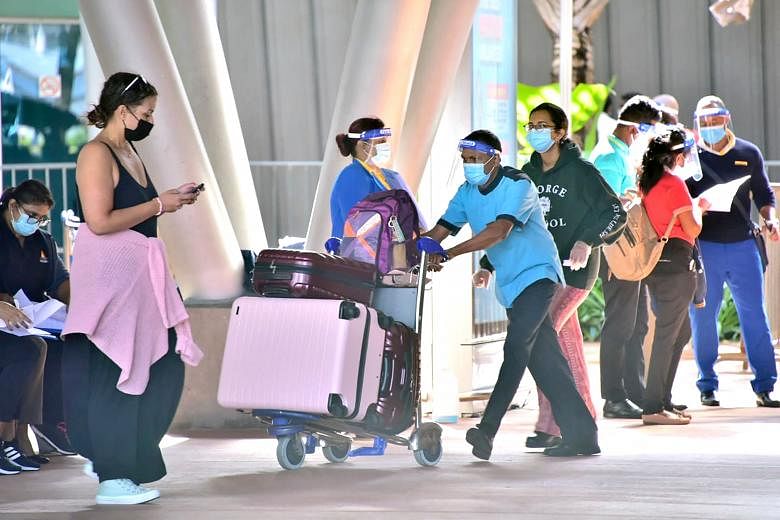
PORT LOUIS, MAURITIUS (AFP) - Hospitals are overwhelmed, ventilators are hard to find and there is no longer enough space at the main cemetery for Covid-19 victims in Mauritius.
Barely three weeks before it flings its doors wide open to international travellers at the start of the peak tourist season, the paradise island nation is struggling with an alarming explosion in coronavirus infections and deaths.
In just two months, cases have jumped over fivefold to more than 12,600 as at last Friday (Sept 10), by far the largest increase across Africa during this period, according to data compiled by AFP.
Since the pandemic started, Mauritius has recorded 1,005 cases of Covid-19 per 100,000 inhabitants, far higher than the continent's average of 598.
The crisis is now so acute that 74-year-old former prime minister Navin Ramgoolam has flown to India for Covid-19 treatment, and the opposition leader has discussed his struggle to find a bed for an ailing friend.
"People do not realise how bad the situation is," said one nurse at a Covid-19 treatment centre, speaking on condition of anonymity for fear of possible reprisals. "We are already above capacity".
In July, the idyllic Indian Ocean holiday destination, renowned for its white sandy beaches and turquoise waters, partly reopened to vaccinated international visitors.
But they had to remain in "resort bubbles" for 14 days before being allowed to venture further afield, provided they had a negative polymerase chain reaction test.
The government reduced that timeframe to seven days this month ahead of a full reopening planned for Oct 1, when tourists will be free to explore the island as long as they test negative up to 72 hours before arrival.
"The situation is worsening," one doctor said on condition of anonymity, adding that medical professionals had been instructed not to talk about the crisis. "The priority of the government is to ensure a smooth opening of the borders on Oct 1."
The government has not given any explanation for the surge, but local media reports speak of people ignoring social distancing guidelines and throwing caution to the winds after getting inoculated.
The authorities had ordered people in some sectors to have Covid-19 jabs or risk hefty fines and jail terms of up to five years.
As at Saturday, 61 per cent of the population was fully vaccinated.
Nevertheless, the pandemic picture remains bleak. Bernard, a worker at the leafy Bigara cemetery on the main island, said the area reserved for coronavirus victims was already full.
The dead are now being laid to rest at another graveyard in the north of the island, but locals are furious, saying Covid-19 victims are being buried too close to their homes.
L'Express newspaper reported that police had to be summoned last week when some youth began throwing stones at health workers who were burying the dead at Bois-Marchand cemetery.
The authorities have also been slow to paint a clear picture of the pandemic death toll, and announced a sharp revision to official figures Friday, from 34 to 89.
The Health Ministry explained its initial calculations by saying that the majority of the 89 fatalities were due to comorbidities and not directly caused by Covid-19.
Locals are conflicted about the relaxation of restrictions, with tourism contributing 25 per cent of the archipelago's gross domestic product prior to the pandemic.
"We had closed the country but despite this, the number of cases exploded," said taxi driver Paul Pierre, who said the prospect of a tourist surge made him "shudder".
Hotel receptionist Diana Mootoosamy echoed his fears, telling AFP, "suddenly we find ourselves without a safety net".
"By welcoming tourists, are we going to attract foreign exchange or (Covid-19) variants?"
Others say the economy, which shrank by 15 per cent during the last financial year, desperately needs the boost.
"My restaurant has been empty since March 2020. If the tourists don't come back, I'll have to put the key under the doormat," restaurateur John Beeharry told AFP.
The country's healthcare system is already struggling to cope. Opposition leader Xavier Duval rang alarm bells over his "traumatic" hunt earlier this month for a hospital bed with a ventilator for a close friend.
With family members in tears, Mr Duval tried several private clinics and the main hospital with no luck, before one centre agreed to admit his friend - but only for 48 hours.
"All this indicates that the system is overwhelmed," he said, calling the situation "alarming". "I'm afraid Mauritius will come to a stage where we might need to decide who will get air supply and who will have to die."

What you need to know about S'pore's new Covid-19 vaccination strategy

Asia stepping up fight against more infectious Covid-19 variants

Hong Kong cements Covid-19 tests with centres just a 15-minute walk

Covid-19 wave looms in Europe amid vaccine fatigue and false sense of security

Long Covid remains a mystery, though theories are emerging

askST: What is excess death and what is Covid-19's true toll on the world?

Biden says pandemic is over; survivors and doctors disagree

No plans to include Covid-19 vaccinations in childhood immunisation schedule: Ong Ye Kung

Human development set back 5 years by Covid-19, other crises: UN report

Covid-19's harmful effects on the brain reverberate years later: Study
Join ST's Telegram channel and get the latest breaking news delivered to you.
Read 3 articles and stand to win rewards
Spin the wheel now
You will be redirected to your dashboard shortly. We will also call you back in 24 hrs .
- Mauritius Tourism Guidelines: A Detailed Post Covid Guide To A Stress-free Holiday In 2024
23 Mar 2023
Mauritius, the place that has remained the inspiration for poets, writers, and artists for centuries, is known for its sapphire-colored waters contrasting magnificently with white sand beaches and grandeurs of lush green plantations. The encounters of Mauritius are beyond beachy leisure. It gives you a chance to sneak peek at the forested and mountainous interiors, explore enormous botanical gardens, and indulge in world-class diving expeditions. From exotic wildlife to exclusive culinary celebrations, Mauritius features an amalgamation of various cultures where you can rejuvenate in your way while being surrounded by untouched nature. As the country has opened up its borders for vaccinated and non-vaccinated travelers, here are the detailed Mauritius tourism guidelines that you must know before planning your future trip.
Mauritius Tourism Guidelines During Covid
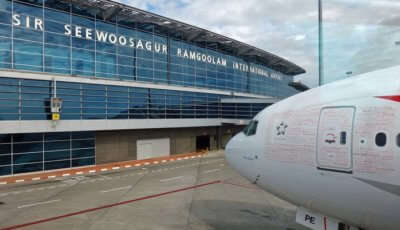
According to the Mauritius tourism guidelines , Indian travelers can now visit the country. The borders are currently open for vaccinated and non-vaccinated travelers. However, you need to follow some mandatory steps to enjoy an uninterrupted holiday in Mauritius. Strict compliances with redefined safety and hygiene standards are followed across the island country to ensure the safety of the citizens and visitors. Don’t forget to consider the following Mauritius rules for tourists before planning your next vacation:
- Vaccinated visitors can freely explore the island. However, a negative PCR test report taken within 72 hours of your departure will be required to enter the country.
- Non-vaccinated guests must book a quarantine stay, and the traveler shall be in the hotel for 14 nights. You must produce a negative RT PCR report for entry.
- All the visitors must have Covid-19 insurance health cover.
- Covid-19 testing is mandatory on the first and fifth of arrival for vaccinated travelers.
- Non-vaccinated visitors must undertake tests on the first, seventh, and fourteenth day of the arrival.
- Fill the Passenger Locator Form & Health Declaration Form on your arrival.
10 Seafood Restaurants In Mauritius To Enjoy The Best That The Sea Offers
Best Time To Visit
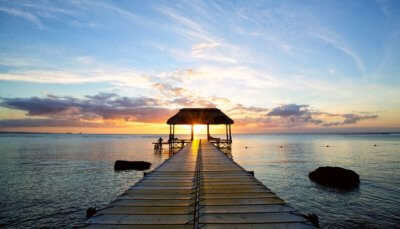
Mauritius experiences the tropical climate with sun-kissed mornings and breezy evenings. The best time to visit Mauritius is between May to December. The weather remains dry, pleasant, and sunny during this time. February is the warmest month, whereas July is the coldest. Summers in Mauritius start from January and extend till April. You can find pocket-friendly options during this time. However, days during the summer months, especially in January and February, remain warm and humid.
How To Reach

The fastest way to reach Mauritius is by air. You can book a flight from India to reach Mauritius. A direct flight from Delhi to Mauritius takes nearly 6-7 hours. After the Covid outburst, the airlines are following strict measures to ensure the safety of passengers and crew. You need to produce a negative Covid test report before boarding a flight to Mauritius. The regulations regarding flights depend upon the individual airlines, and you must check the updated requirements on the official website.
Mauritius has two airports, which are Sir Seewoosagur Ramgoolam International Airport and Sir Gaetan Duval Airport. Both the airports are well-connected. Most of the connecting flights to Mauritius go via Jeddah, Dubai, or Abu Dhabi.
Monsoon In Mauritius: A Handy Guide To Gather Experiences Like Never Before!
Getting Around

According to Mauritius tourism guidelines , there are strict rules followed in the country regarding exploration and activities. The country has set three categories for visitors, and access to different parts of the island depends according to these categories:
- Vaccinated hotel stay is for fully vaccinated travelers who wish to stay in a hotel. The traveler can explore the entire island country freely.
- Vaccinated other accommodation, is for vaccinated travelers who wish to stay at the island’s villas, bungalows, guest houses, B&Bs, or homestays. They will have unlimited access to explore the island.
- Unvaccinated travelers need to stay at the hotel for the quarantine period. The access to these travelers remains restricted to the hotel room until 14 days.
Places To Visit In Mauritius During Covid

The tourist places in Mauritius , including beaches, waterfalls, and religious sites, are open. However, the authorities are following strict guidelines to curb the spread of the virus. Trou Aux Biches, Belle Mare Plage, Ile Aux Cerfs, Pereybere, La Cambuse, Le Morne, Ilot Gabriel Beach, Chamarel Coloured Earth, La Cuvette Beach, Flic En Flac Beach, Mont Choisy Beach, Poste Lafayette Beach, Black River Gorges National Park, and more. Covid safety measures especially, wearing masks and maintaining distance, are mandatory at all tourist places.
8 Exciting Things To Do In Mauritius On Your Vacation In 2022!
Things To Do In Mauritius During Covid

Mauritius is known for its adventurous expeditions, and from diving to hiking, the country offers almost everything that makes your tropical vacay memorable. As per Mauritius rules for tourists , non-vaccinated travelers must complete 14 days quarantine before undertaking these activities. A PCR test is conducted on the fourteenth day of your stay, and tourist with negative results gets unlimited access to explore the island country.
Accommodation

Hotels, resorts, and other accommodations in Mauritius are open for visitors and follow safety and hygiene standards to ensure a safer ambiance. Vaccinated visitors can stay at a property of their choice by pre-booking the stay before arrival. Non-vaccinated travelers need to accommodate only at the property approved by the authorities for 14 days. After completing the quarantine period, the traveler can shift to other accommodations, as per Mauritius tourism guidelines .
Parasailing In Mauritius: 3 Amazing Places Ensuring Adrenaline Rush
Restaurants

The restaurants in Mauritius are operating with strict measures undertaken to curb the spread of the virus. Mauritian cuisine has a blend of African, Chinese, European, and Indian flavors and features exquisite recipes worth tasting while exploring the island. Some of the best restaurants to plan your meals while holidaying here are Dix Neuf Restaurant, Stars Restaurant, La Plage Beach Club Restaurant, Republik Beach Club & Grill, Château Mon Désir, and Annabella’s Restaurant.
What To Pack

Traveling in the post-Covid times requires a little more preparation from your end. Now, there are many essentials that you need to carry for an uninterrupted holiday. The following are essential to pack for your upcoming Mauritius holiday:
- Important documents such as treatment you have taken in the near past.
- Medicines for cold, cough, fever, nausea, allergy, etc.
- Extra pair of masks, hand sanitizers, and disinfectants.
- Carry light clothes, especially cotton or preferred breathable fabric.
- First-aid kit with all the mandatory items.
- A pair of slippers, sunscreen, swimwear, and sunglasses.
Skydiving In Mauritius 2022: Explore Limitless Fun & Adventure In The Air
Travel Checklist

According to the latest Mauritius tourism guidelines , check the following things before your trip:
- Pre-book your flights and hotel and must have confirmed status.
- Meet the prerequisite and fill Passenger Locator Form and Health Declaration Form before arrival.
- Carry your negative Covid report taken within 72 hours of your arrival.
- Keep your vaccination certificate handy as proof to submit on arrival in Mauritius.
Covid-19 Prerequisites And Consequences In Mauritius
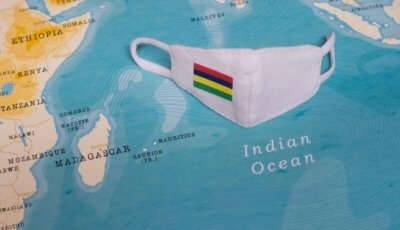
- Make sure you go through the thermal screening at the airport.
- Expect to be asked for random samples which is a part of health surveillance by the Government.
- On showing any covid-19 symptoms, you will have to go through PCR testing and quarantine yourself.
- On testing positive, you will be isolated either till you test negative or for 14 days.
- Covid test will be conducted during the stay to ensure safety.
14 Restaurants In Mauritius Which You Cannot Miss On Your Trip In 2022!
Further Travel Tips

Here are some Mauritius rules for tourists that will keep your journey safe:
- Carry and wear your mask throughout your journey.
- Keep extra sanitizers, masks, gloves, and wipes for backup.
- Avoid visiting crowded places and maintain social distancing.
- Non-vaccinated travelers must complete 14 days quarantine before exploring the island.
Mauritius has opened up its borders for travelers and is offering a safe ambiance to Globetrotters. The country is welcoming visitors from across the world with strict guidelines. We hope that the mentioned Mauritius tourism guidelines will help you while planning your future trip. You can book your Mauritius holiday with TravelTriangle and have an enthralling experience with your loved ones.
For our editorial codes of conduct and copyright disclaimer, please click here .
People Also Read:
Post-Covid Travel Guide To Seychelles Post-Covid Travel Guide To Thailand Post-Covid Travel Guide To Sri Lanka
Recent Posts

Port Mathurin Is Coastal Gems Of Rodrigues Island

The Complete Guide To Tam Coc In Vietnam: The Mysterious Caves Of North Vietnam
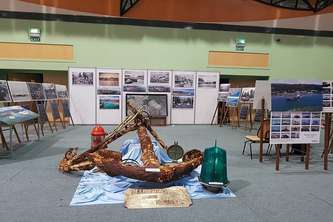
Photography Museum In Mauritius: A Pocket Guide To Know All About This Place
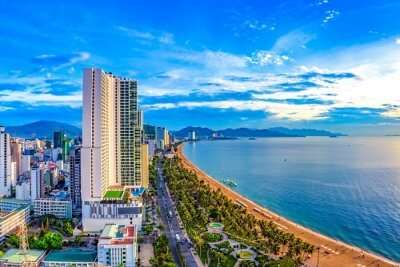
The Ideal Nha Trang Travel Guide To Help You Plan Your Vietnam Trip Well
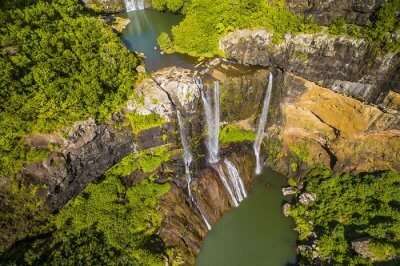
Hike All The Way To Tamarind Falls In Mauritius For A Rejuvenating Experience!

This Comprehensive Sofia Travel Guide Will Make Your Trip Hassle Free!
Trending Blogs

20 Mysterious Places In India To Visit In 2024 More Bizarre Than The Bermuda Triangle

10 Scariest Roads In India That Are A Driver’s Nightmare

101 Places To Visit In India Before You Turn 30 in 2024

35 Exotic Places To Visit In December In India 2024 To Enjoy A Surreal Vacation

60 Best Honeymoon Destinations In India In 2024

95 Best Honeymoon Destinations In The World In 2023 For A Romantic Escape!
Best Places To Visit In India By Month
Best places to visit outside india by month.
- TravelTriangle
- International
- Mauritius »
- Tour Packages
- Honeymoon Packages
- Family Packages
- Budget Tour Packages
- Luxury Tour Packages
- Adventure Tour Packages
- Group Tour Packages
- Maldives Tour Packages
- Bali Tour Packages
- Dubai Tour Packages
- Singapore Tour Packages
- Thailand Tour Packages
- Europe Tour Packages
- Sri Lanka Tour Packages
- Tour Packages From Delhi
- Tour Packages From Mumbai
- Tour Packages From Bangalore
- Tour Packages From Chennai
- Tour Packages From Kolkata
- Tour Packages From Hyderabad
- Tour Packages From Ahmedabad
- Thailand Tourism
- Bali Tourism
- Singapore Tourism
- Maldives Tourism
- Mauritius Tourism
- Dubai Tourism
- Europe Tourism
- Hotels in Thailand
- Hotels in Maldives
- Hotels in Mauritius
- Hotels in Bali
- Hotels in Dubai
- Hotels in Singapore
- Hotels in Sri Lanka
- Fitch Solutions
CreditSights
Fitch learning, fitch ratings research & data, sustainable fitch.
- BMI Platform
- BMI Geoquant
- Fitch Connect
Mauritius Tourism Set For Robust Growth With Full Rebound Projected For 2024
Tourism / Mauritius / Fri 26 Apr, 2024

Key View: Over 2024, we forecast total arrivals to Mauritius to reach 1.5mn, up from 1.3mn arrivals in 2023, growing by 14.2% y-o-y. We expect Mauritius’ 2024 arrivals to fully recover to pre-Covid levels in 2019, while surpassing the historic peak in 2018. Arrivals will continue to increase over the medium term (2024-2028) with the market’s beach holiday tourism offering driving arrivals.
We at BMI forecast Mauritius’ arrivals to grow by 14.2% y-o-y to 1.5mn over 2024. This is up from the 1.30mn arrivals reported for 2023 by Statistics Mauritius. The reported arrivals figures for 2023 are slightly lower than 1.33mn arrivals that we had forecast for the year. The 2024 year will mark a full recovery from the negative impact of the Covid-19 pandemic with arrivals reaching 106.9% of the 2019 level (1.4mn arrivals).
France was Mauritius’ largest arrivals source market in 2023 with 319,522 arrivals (24.7% of total arrivals). This was followed by the UK in second place with 145,873 arrivals (11.3% of total arrivals) in 2023 and Reunion Island in third place with 134,222 arrivals (10.4% of total arrivals). Germany was Mauritius’ fourth largest arrivals source market with 118,546 arrivals (9.2% of total arrivals) in 2023 while South Africa completed the top five largest source markets with 106,169 arrivals (8.2% of total arrivals).
We forecast Mauritius’ arrivals to continue to increase over the remainder of our 2024-2028 forecast period, growing by an annual average of 6.8% y-o-y to reach 1.8mn in 2028. The growth in Mauritius’ arrivals over the medium term will be driven by key source markets in Europe, Africa and the Asia-Pacific regions.
Full Arrivals Recovery Projected For 2024
Mauritius - total tourist arrivals (2014-2028).
While we have a positive outlook for arrivals to Mauritius, tough global macroeconomic conditions and tighter credit conditions will weigh on consumers’ ability to spend on discretionary categories such as travel and hospitality in the short term (2024). We believe consumers in key source markets, particularly in Europe, will remain price sensitive in 2024 with travellers shifting travel preferences from long-haul travel to travelling domestically or within the Europe region. We also expect travellers to limit their frequency of travel while extending their duration of stays at a destination.
We believe that the marketing initiatives undertaken by the Mauritius Tourism Promotion Authority (MTPA) will facilitate an expansion in tourist arrivals in the near-to-mid term while also contributing to the diversification of arrivals source markets. The introduction of additional flight routes by Air Mauritius will bolster the MTPA's strategy to enhance visitor numbers. In April 2024, (MTPA) entered a partnership with dnata, a Dubai, UAE-based air and travel services-based company. This partnership will see dnata support MTPA’s efforts to increase arrivals from the UAE by being a representative for sales, marketing and public relations in the UAE. UAE-based travellers can conveniently access Mauritius through Emirates' twice-daily flights from Dubai aboard the Airbus A380, with a flight duration of around six and a half hours. In February 2024, Air Mauritius announced plans to launch two seasonal weekly direct flights between Mauritius and Rome from October 16 2024 to April 30 2025. The launch of the two direct flights between Mauritius and Rome will support the growth of the market’s arrivals from Italy and its neighbouring markets.
This commentary is published by BMI, a Fitch Solutions company, and is not a comment on Fitch Ratings Credit Ratings. Any comments or data included in the report are solely derived from BMI and independent sources. Fitch Ratings analysts do not share data or information with BMI. Copyright © 2023 Fitch Solutions Group Limited. All rights reserved. 30 North Colonnade, London E14 5GN, UK.
Thank you. Your download link will be emailed to you shortly.
Please complete to access all articles on fitchsolutions.com.
Thank you for registering. To read the article please click on the link we have sent to your email address.
Get to know the business behind the products. Meet some of our key people and explore our credentials.

Sustainable Fitch Wins Best ESG Data Provider at the Inside Market Data and Inside Reference Data Awards

BMI Launches New Political Risk Service Offering Key Insights, Analytics, And Data Across 200+ Markets

AfCFTA Implementation Could Boost African GDP by up to 4.2% by 2035, Says CFCA Insights/BMI Report
- Early Talent
Know what you need but not sure where to find it? Discover how we can meet your requirements.
- Countries & Regions
- Industries & Sectors
- Companies or Entities
- Issues, Deals & Transactions
Explore knowledge that cuts through the noise, with award-winning data, research, and tools.
- Country Risk
- Industry Research
- Operational Risk
- Fitch Ratings Data & Research
- Fitch Credit Ratings Data
- Fitch Ratings Credit Research
- Fitch Ratings ESG Relevance Scores Data
- Fundamental Data & Analytics
- Bank Scorecard
- Basel III - SCRA Data
- CDS Implied Credit Scores
- Financial Implied Credit Scores
- Fitch Connect News
- Fundamental Data
- Leveraged Finance Intelligence
- Covenant Review
- LevFin Insights
- PacerMonitor
- CreditSights
- Risk Products
Browse over 2,000 research reports at the Fitch Solutions Store .
- Country Risk Reports
- North America
- Latin America
- Middle East
- Industry Reports
- Special Reports
- Browse All Reports
Know what you need but can't find it?
BMI has a 40- year track record of supporting investors, risk managers and strategists. We help them identify opportunities and quantify risks in markets where reliable information is hard to find and difficult to interpret. This includes in-depth insight and data, and high frequency geopolitical risk indicators.
CreditSights enables credit market participants to manage financial risk better with independent credit research, global market insights, covenant analysis, and news, distilling market noise into actionable investment ideas.
dv01 provides true transparency in lending markets, and valuable intelligence on every consumer loan in the structured finance world, through a leading data intelligence platform.
Fitch Learning develops the future leaders of the financial services industry and drives collective business performance. We do this by utilizing a best-in-class technology platform and blended learning solutions that maintain the personal element of development.
We help credit, risk, and investment professionals make better-informed decisions and meet regulatory requirements, within and beyond the rated universe. We do this by providing differentiated perspectives and in-depth expertise through Fitch Credit Ratings, Fitch Ratings Credit Research, Fundamental Financial Data, and innovative datasets, all backed by transparent methodologies, accessible analysts, and workflow-enhancing analytical tools.
Sustainable Fitch delivers human-powered sustainability Ratings, Scores & Opinions, as well as Data & Research to serve the needs of fixed income investors. Our specialists uniquely deconstruct the complex issues of E, S, and G globally.
ESG Relevance Scores Data
Access ESG Scores on more than 10,000 entities and transactions, and over 140,000 ESG data points to support your credit risk assessments.
Get to know the company behind the products, our values and our history. Meet some of our key people and explore our credentials.
- Work with Us
Explore our latest views on risks and opportunities by industry, region or topic.

India EV Profile: Easing Import Barriers Will Boost EV Adoption

Australian Banks Are Demonstrating Resilience, But Tight Margins Are Weighing On The Bottom Line

Green Policy In Slovenia To Remain Divisive

US Election Chartbook (April 2024)

Americas Pharma & Healthcare Insight (March 2024)

Asia Pacific Infrastructure Insight (March 2024)
- Global Elections 2024
- BMI Key Themes 2024
- Russia-Ukraine Crisis
- Agribusiness
- Consumer & Retail
- Consumer Electronics
- Food & Drink
- Information Technology
- Infrastructure
- Medical Devices
- Oil & Gas
- Pharmaceuticals
- Telecommunications
- More Industries
Learn more about the BMI products and services that empower you to make critical business decisions with confidence.
- Politics & GeoQuant
- Reports Store

How Mauritius’ outward-focused economy survived previous shocks
Associate Professor of Economics, University of Mauritius
Disclosure statement
Harshana Kasseeah receives funding from the University of Mauritius, the Mauritius Research Council.
View all partners
Mauritius is a small island nation located in the Indian Ocean. Like other countries, it faces drastic changes to its social and economic landscape with the appearance and spread of COVID-19.
An additional challenge for Mauritius is that it is highly dependent on the global economy for food and for its core industries. Its small island economy rests on a strategy of being open to imports and exports. Given the small domestic market, being open gives the economy the opportunity to grow.
The country’s core industries – tourism, financial services and business process outsourcing – all rely on business and customers from abroad. The services sector alone contributed around 75% to the country’s GDP in 2019.
In 2018, exports were led by fish, clothing and sugar. Sugarcane occupies 85% of the country’s cultivated land. Major markets for these goods were Europe, South Africa and Madagascar.
The current pandemic is bound to have an impact on the island’s economy because of its outward focus. Most of its international markets have been hit, some quite severely, by COVID-19. Many countries have also suspended all international travel, which will affect the tourism industry.
This will have adverse effects on the Mauritian economy. The first estimates point to a GDP contraction of 3% to 6% in 2020.
This isn’t the first time Mauritius has felt the effects of major shocks, but with prudent economic measures it has been able to pull through. Fortunately, Mauritius has entered COVID-19 with some strengths, namely its well-diversified economy, relatively low unemployment, low inflation, strong social security safety nets and a strong financial sector.

Previous shocks
Mauritius is often touted as an African “economic success story” because of these strengths, steady growth and stability.
This is a result of the country’s outward-focused strategy. Following a period of protectionism – which helped to protect its growing local industries from external competition – it ensured there were few trade barriers and low customs duties. This allowed for a remarkable transformation from a mono-crop sugar producer to a leading sub-Saharan Africa exporter of manufactured goods. It meant Mauritius rose from a low income economy to an upper middle income economy in a relatively short span of time.
But being reliant on external markets also means being exposed to external shocks. Over the past 15 years Mauritius has experienced a range of shocks which resulted in high inflation and surges in unemployment.
In 2005, a major export shock came when an arrangement called the Multi-Fibre Arrangement ended. This had given Mauritius preferential access to European Union and United States markets. Mauritius couldn’t compete with low-cost Asian textiles and clothing. As a result over 25,000 people lost their jobs.
One year later, Mauritius experienced its first sugar shock when the EU lowered sugar prices by almost 36%. This sharp cut had a significant impact on the country’s foreign exchange earnings. The situation was further compounded when the EU abolished quotas in 2017.
Shortly afterwards, the 2007-2008 world food crisis led to large increases in the price of rice, wheat and maize. Mauritius, which currently produces enough food for just 25% of the country’s needs, could not meet local demand for staples, such as rice and wheat.
In addition to this the 2007 global financial crisis dealt severe blows to the textile and tourism sectors.
Outward focus
In the context of this pandemic, there are major concerns for some of Mauritius’ key industries.
Mauritius is highly dependent on its tourism sector: tourism contributes 8.6% to the country’s GDP and about 30,000 people were directly employed by the sector in 2018. There are also many related businesses, such as souvenirs, taxi services and restaurants, that rely on it.
But tourists are predominantly international . And with no visitors coming in from abroad because of the pandemic, there will be a major impact on the country’s economy and employment.
Read more: Global tourism industry may shrink by more than 50% due to the pandemic
Another concern is not having enough food. Mauritius imports around 70% of its foodstuffs. For instance, in 2018, it is reported that Mauritius spent $1.1 billion on its food imports. This includes basics such as rice, flour, wheat and cooking oil.
Most of these goods come from France, South Africa, India, Australia and New Zealand. To my knowledge, export bans haven’t yet been imposed, but there’s a real fear that food supply chains may be disrupted. In addition, the Food and Agriculture Organisation of the United Nations has already warned that an imbalance between food supply and demand could result in price spikes and increased price volatility.
Overcoming shocks
Nevertheless, Mauritius has faced adverse situations before and overcome them. This can be attributed to the country’s macroeconomic, political and socio-economic stability.
Shocks were dealt with through a mix of monetary and fiscal easing. For instance, a stimulus package was introduced in 2008 to protect vulnerable sectors and prevent job losses from the global economic downturn. It provided direct support to companies to help them ride out the storm of the financial crisis.
The government introduced a work-mix training programme to prevent layoffs. Workers worked some days and attended training programmes on others. A government fund reimbursed employers for the days workers were in training.
Mauritius also used diversification as a tactic to overcome shocks. For instance, reeling from the end of global textile quotas and reduced sugar prices in the European Union, Mauritius became a financial centre , focusing on cross-border investment, cross-border corporate banking and private banking and wealth management. This is a core part of the Mauritian economy, contributing almost US$1 billion to GDP (8% of the total) and more than 11,000 jobs.
Because of this diversity, in spite of the COVID-19 lockdown, there are still sectors of the economy which are operating on a reduced capacity or on a work from home basis. These include banking and offshore services.
Policymakers in Mauritius have been pro-active in dealing with the difficulties that arose with the lockdown.
The finance ministry introduced a wage assistance scheme for employers and a self-employed assistance scheme . In addition, banks will provide a moratorium of six months on capital repayment for existing loans for those affected by COVID-19.
One big concern is over food. The country has never really experienced drastic food shortages or food shocks. Following the food and financial crisis of 2007-2008, the government implemented strategies to foster local production and reduce dependency on imported food commodities. But despite many incentives to encourage agribusiness, these measures haven’t worked and the country is far from self-sufficient.
Despite these challenges, Mauritius has proved its resilience in the face of external shocks and has entered this situation with some key strengths which should help it weather the worst of the storm.
- Food security
- Coronavirus
- Peacebuilding

Data Manager

Research Support Officer

Director, Social Policy

Head, School of Psychology

Senior Research Fellow - Women's Health Services
- Get involved
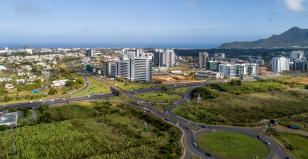
- Policy Brief - Mauritius - Strategic Investments for Accelerating Socio-Economic Transformation in the Post-COVID-19 Era .pdf pdf (2.6 MB)
Mauritius: Strategic Investments for Accelerating Socio-Economic Transformation in the Post-COVID-19 Era
Policy Brief - Mauritius - Strategic Investments for Accelerating Socio-Economic Transformation in the Post-COVID-19 Era .pdf
July 5, 2021
While the pandemic has created uncertainties about the shape of recovery, both at the domestic and global level, the Mauritian Government’s recovery programme reflected in the 2021-2022 budget provides some practical foresight necessary to protect the economy and build readiness for the post- COVID-19 era. This policy brief articulates the government recovery proposals in the 2021-2022 national budget. It places emphasis on building back better through three strategic areas namely: building and sustaining the private sector, rethinking of the tourism sector as a core pillar of the economy; and leveraging the potential of digitisation.
Document Type
Regions and countries, sustainable development goals, related publications, publications, undp mauritius country programme document 2024-2028.
The UNDP programme in Mauritius is be clustered around two complementary programme areas, using cross-cutting innovation, technology and digitalization to impro...
UNDP Seychelles Country Programme Document 2024-2028
The country programme’s overarching theory of change is that if the agility of the public sector is enhanced through digital transformation; if the structural c...
Seychelles - Development Finance Assessment
The Seychelles Development Finance Assessment (DFA) was conducted on behalf of the Government of Seychelles, as part of efforts to assist the identification and...
National Employee Engagement Survey 2023
Business Mauritius launched a National Employee Engagement Survey in March 2023. This business community-wide study run in collaboration with the Human Resource...
UNDP Mauritius Annual Report 2022
In 2022, the UNDP in Mauritius collaborated across the UN system and partnered with bilateral and multilateral actors to deliver development programmes developm...
UNDP Seychelles Annual Report 2022
Over the past year, the UNDP programme in Seychelles made progress across three directions of change contributing to structural transformation, leaving no one b...
- Mauritius Tourism
- Mauritius Hotels
- Mauritius Bed and Breakfast
- Mauritius Vacation Rentals
- Flights to Mauritius
- Mauritius Restaurants
- Things to Do in Mauritius
- Mauritius Travel Forum
- Mauritius Photos
- Mauritius Map
- All Mauritius Hotels
- Mauritius Hotel Deals
- Last Minute Hotels in Mauritius
- Things to Do
- Restaurants
- Vacation Rentals
- Travel Stories
- Rental Cars
- Add a Place
- Travel Forum
- Travelers' Choice
- Help Center
First time going questions? - Mauritius Forum
- Africa
- Mauritius
First time going questions?
- United States Forums
- Europe Forums
- Canada Forums
- Asia Forums
- Central America Forums
- Africa Forums
- Caribbean Forums
- Mexico Forums
- South Pacific Forums
- South America Forums
- Middle East Forums
- Honeymoons and Romance
- Business Travel
- Train Travel
- Traveling With Disabilities
- Tripadvisor Support
- Solo Travel
- Bargain Travel
- Timeshares / Vacation Rentals
- Africa forums
- Mauritius forum

Is May a good time to go, what’s the weather normally like, is there much rain
What resort would you pick between, long beach - sun resort or Heritage Awali Golf & Spa Resort
4 replies to this topic

May is a good month yes.
Average daytime highs of 27C and the heat and humidity of summer have mitigated. Less rainfall too.
https://www.metoffice.gov.uk/weather/travel/holiday-weather/africa/mauritius-weather
To view the not so rosy reviews click on the very good/average reviews in the tick box.
https://www.tripadvisor.co.uk/Hotel_Review-g298342-d2100221-Reviews-Long_Beach_Mauritius-Belle_Mare.html
Awali is at Bel Ombre in the south and is quite isolated, with only other hotels close by and the sea has some strong currents.
Reviews here complain of poor service generally.
https://www.tripadvisor.co.uk/Hotel_Review-g612353-d505820-Reviews-Heritage_Awali_Golf_Spa_Resort-Bel_Ombre.html
I must point out that I haven't stayed in either of these resorts.

It is very family orientated with a great kids club.
I also seen that cyclones can happen in May
Is this often or I’m a better picking a different month
Cyclone season is usually well over by April.
I've known one late April cyclone, Fakir, in late April 2018.
None in May.
- Flic-en-Flac or Grand Baie /Pereybere for NYE? 5:30 am
- Buses bw Airport & Sights 4:28 am
- Please post your weather updates here from September 2023 yesterday
- Weather in february/april yesterday
- July honeymoon yesterday
- Island Hopping trips yesterday
- O2 charges in Mauritius May 29, 2024
- Ferney walking trails May 29, 2024
- Leptospirosis FYI May 29, 2024
- Accommodation in the west longterm 1 Year May 29, 2024
- Bel Ombre Beach May 28, 2024
- Heritage Awali Slow Service May 28, 2024
- Snorkelling trip in shallow waters May 28, 2024
- Transfer/taxi to airport. May 28, 2024
- Weather in August? 4 replies
- weather in Mauritius in May 13 replies
- weather in Mauritius in July/August 5 replies
- Weather in late September in Mauritius/Le Mauricia Hotel 4 replies
- Snorkelling in Mauritius 4 replies
- Weather in June 6 replies
- October weather which side of island is best? 4 replies
- how expensive is mauritius 7 replies
- Crystal beach resort 4 replies
- Factory outlets 6 replies
Mauritius Hotels and Places to Stay
- Beach renovations and erosion
- Mauritius Wildlife
- Passport and Immigration questions
- Public holidays 2023 and 2024
- Adults only hotels in Mauritius
- Mauritius hotels with heated pools
- Official Star ratings for Mauritius hotels
- Scams in Mauritius
- Hotel Renovations 2022
- Walking with lions
- Covid protocol from 1st October 2021
- Favourite Mauritius beaches
- Is Mauritius Safe?
- Ferry services
- Trip Reports from October 1st 2021 reopening
- Hotel Renovations 2021
- Hiking in Mauritius?
- Birdwatching?
- Weather Part 2
- Are there eco lodges or Jungle type accomodation in Mauritius?
- Airbnb in Mauritius - things to be aware of
- Trip Reports 2019/2020
- Trip Reports 2018
- Trip Reports 2017
- Electric Plugs
- Do resorts offer Day Passes?
- What is the best currency for Indian travellers to bring to Mauritius?
- Are there any animal friendly hotels in Mauritius?
- Some thoughts before you book your Mauritius holiday
- Documents required to marry in Mauritius
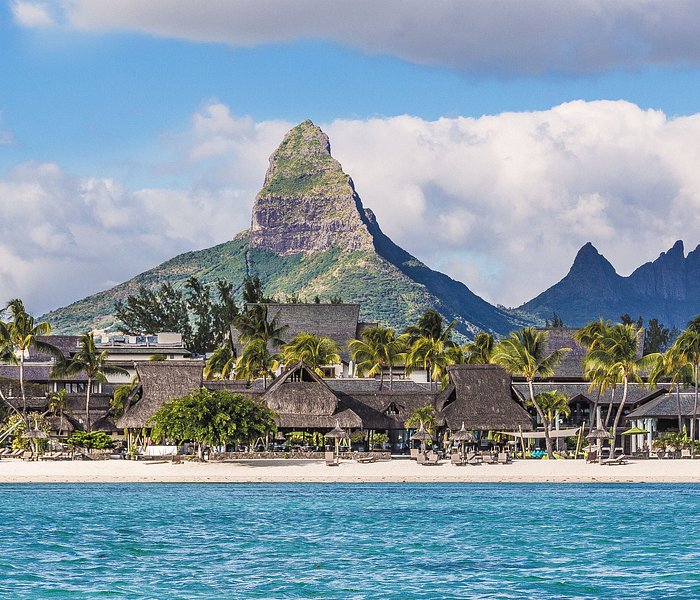
Wine Tourism in Montenegro in the Post-COVID-19 Era
- Conference paper
- Open Access
- First Online: 01 June 2024
- Cite this conference paper
You have full access to this open access conference paper

- Valentina Stankovic ORCID: orcid.org/0009-0000-2288-1564 4 ,
- Nikolaos Trihas ORCID: orcid.org/0000-0001-9084-4036 5 , 5 &
- Irini Dimou ORCID: orcid.org/0000-0002-4354-6092 5
Part of the book series: Springer Proceedings in Business and Economics ((SPBE))
Included in the following conference series:
- The International Conference on Strategic Innovative Marketing and Tourism
The aim of this paper is to explore the level of wine tourism development in Montenegro, focusing on the challenges emerged by the COVID-19 pandemic. More specifically, this research examines the motivation for (or not) engaging in wine tourism, the annual volume of visitors, the services offered to visitors, the promotional actions, the critical factors for the further development of wine tourism in the country, the impact of the pandemic on wineries and the strategies the winemakers followed to cope with it. In order to meet this aim, a survey was conducted via an online questionnaire in a sample of 41 wineries from different wine-producing regions in Montenegro. Results indicate that most of the wineries have been actively involved in wine tourism, providing different activities to their visitors, as winemakers recognize both the potential of wine tourism as an economic activity, as well as specific benefits for their wineries. However, winemakers admit that wine tourism in Montenegro is still on its infancy, proposing specific measures for its further development. In addition, the majority of winemakers reported that the pandemic has heavily affected their wine tourism activity, forcing them to take multiple measures to cope with these effects and adapt to the ‘new normality’. Findings and discussions of this study are useful both to wine industry practitioners and to academic researchers interested in wine tourism.
You have full access to this open access chapter, Download conference paper PDF
- Wine tourism
1 Introduction
Wine tourism—also referred to as oenotourism, enotourism, or vinitourism—is a form of tourism which in the last decades has attracted intense academic and business interest, as it has developed to such an extent that today it is a distinct part of the global tourism industry. It refers to tourists visiting vineyards, wineries, cellars, wine festivals and shows to taste, consume or purchase wine, and/or engage in wine-related activities, and thus experience the culture and lifestyle of destinations [ 1 ]. Due to its nature, wine tourism is linked to many other tourist activities and alternative forms of tourism, such as agritourism, culinary tourism, cultural tourism, educational tourism, etc. Practically, this means that the target group of wine tourism does not only include wine enthusiasts, wine experts or tourists whose main motivation is wine, but visitors for whom wine and the related activities around it are a secondary activity in the destination they are visiting.
The interconnection of the wine and the tourism sectors can bring positive effects for both wineries and wine-producing regions, at local, regional and national level [ 2 ]. Many wineries and wine-producing regions around the world have recognized the benefits arisen from wine tourism development (i.e. sales, employment, profit, sustainable development), although the conversion of a wine-producing area into a wine tourist destination is not an easy task.
On the other hand, COVID-19 pandemic has heavily affected the global wine industry, especially the wine tourism activities. According to recent data [ 3 ], in 2000, 47.3% of wineries worldwide experienced a drop in visitor numbers of more than 90%. This resulted in 52.9% of wineries losing more than 50% of their income from wine tourism. To deal with the disruption caused by the pandemic, wineries had to apply new resilience strategies [ 4 ].
In this context, the aim of this paper is to investigate the level of wine tourism development in Montenegro, focusing on the challenges emerged by the COVID-19 pandemic. Even though winemaking activity has a long tradition in Montenegro and despite the growth of interest in recent years, there is a lack of research on wine tourism, in terms of demand and supply. This study aims to fill this gap, as one of the first attempts to explore the opinions and perceptions of winemakers in Montenegro around an issue of great interest in recent years.
2 Wine Tourism in Montenegro
Montenegro is the smallest country on the coastline of the Adriatic Sea located in Southeastern Europe with the population of 616,695 inhabitants [ 5 ]. When it comes to wine tourism in Montenegro there are still no significant research contributions [ 6 ] but despite that fact a more active approach to the development of wine tourism started with the realization of wine routes in Montenegro in 2006/2007. Organization of many different wine festivals, events, saloons and projects in the last decade are starting to embrace the importance of this segment within the most important industry for Montenegro. In The Program of Rural Tourism Development of Montenegro with the action plan 2019–2021 [ 7 ] wine tourism is placed on the list of the priority products of rural tourism in Montenegro in the group three which refers to other products related to rural cultural heritage. This program also emphasizes the importance of formation of different clusters related to tourism among which a cluster of wine should be considered.
On the basis of a conducted study during 2017 [ 8 ] about the reionization of the viticulture geographical production areas of Montenegro, 3 viticulture regions with their 10 sub regions and 1 potential viticulture region with its 5 potential sub regions were defined. This study thus covers the coastal, central and northern part of Montenegro and in this way unified the possibility for the development of wine tourism in all the main regions of the country. The wine-growing regions defined in this study are the Montenegrin Basin of Lake Skadar, Montenegrin Primorje, Nudo and the potential region of Montenegrin North. The area of vineyards grows from year to year and in 2021 was 2850 hectares with the overall production around 400,000 L per year and about 300 different wines on the market [ 9 ].
3 Methodology
This paper aims to explore the level of wine tourism development in Montenegro, focusing on the challenges emerged by the COVID-19 pandemic. More specifically, this research examines the motivation for (or not) engaging in wine tourism, the annual volume of visitors, the services offered to visitors, the promotional actions, the critical factors for the further development of wine tourism in the country, the impact of the pandemic on wineries and the strategies the winemakers followed to cope with it. For the purposes of the research, a self-completed structured questionnaire consisting of three sections and fourteen questions (closed and 5-point Likert scale questions), based on literature review [ 1 , 10 , 11 , 12 ] was designed on the Google Forms platform. The first section includes questions about the main characteristics of the wineries, i.e., brand name, region, year of establishment, annual wine production. In the second section, the questions focus on the involvement of wineries in tourism activities, and in the third section the impact of the pandemic on the operation of wineries is examined. According to official data [ 9 ] the total number of wineries in Montenegro is 88. The questionnaire was emailed to 80 wineries, as no contact information was found for the other 8. The survey conducted from April to June, 2023. A total of 41 valid questionnaires were collected, a response rate of 51.2%, which—given the nature and challenges of the research—is considered a satisfying percentage. The collected data were statistically analyzed using the Statistical Package for the Social Sciences (SPSS) version 26.0.
The wineries that participated in the survey come from all three winemaking regions of the country. The vast majority of them (90.2%) are located in the Crnogorski Basen Skadarskog Jezera region, which in not surprising since most of the country’s wineries are located in this region, 3 wineries come from the Crnogorsko Primorje region, and just one winery from the Nudo region. Regarding the wineries’ year of establishment, the oldest winery was established in 1912 and the newest in 2020. As can be seen, many new wineries have been established in recent years, as only 5 of the 41 wineries in the sample were established before 2000 (1912, 1932, 1963, 1966 and 1990, respectively), while 16 wineries were established in the period 2000–2010 and the remaining 19 in the period 2012–2020. Almost nine out of ten wineries (90.2%) are very small in size, producing less than 50,000 L of wine per year. Only three wineries are very large with an annual wine production of more than 500,000 L, and one winery produces 50,000–100,000 L.
Of the 41 wineries that participated in the survey, 33 (80.5%) are open to the public. The other eight wineries cited lack of state support and inclusion of wine tourism in national tourism planning as the main reason for not being involved in wine tourism. Secondary reasons reported were in order of importance the lack of appropriate infrastructure for the reception and hospitality of visitors, the need for extra staff/increased operating costs, the high cost required (lack of capital, lack of financing for expansion), and finally the business philosophy, as emphasis is placed on production and sale of wine rather than other tourism related activities. 21 of the visitable wineries are open all year, while the other twelve are open for five to eleven months a year. The number of visitors received by wineries varies and is indicative of the level of development of each winery’s tourism activities. This number ranges from 10 to 30,000 per year, while 17 wineries receive less than 1000 visitors. It is also noteworthy that 25% of wineries do not keep data on the number of their visitors.
Subsequently, participants were asked to indicate their level of agreement with a set of reasons for getting involved in tourism activities. They recognize multiple benefits and reasons that led them to the decision to develop wine tourism activities. The main reasons for this relate both to the expected benefits for their own business and to their region and also Montenegro as tourist destinations. Regarding the benefits to their own business, they expect that by engaging in wine tourism they will raise the brand recognition of the winery and its wines (mean = 4.23), get in contact with the consumers receiving feedback (mean = 4.18), improve the image of the winery (mean = 4.05), achieve cellar door sales (mean = 4.03), and attract new customers (mean = 4.03). As far as the benefits for their region/country, they consider that their tourism activities contribute to the tourist development of the region and the enrichment of the offered tourist product (mean = 4.26), contribute to the seasonality mitigation and extension of the tourist season (mean = 3.95) as well as the sustainable development of the region (mean = 3.94), strengthen the local economy through increased agricultural production and employment (mean = 3.73), and finally offer jobs to the locals (mean = 3.65).
Having recognized several potential benefits of wine tourism, the 33 wineries that are open to the public offer multiple services to their guests. Wine tasting and cellar door sales are available in all the wineries, while a slightly lower number of them offer also guided tours in the winery and the vineyards. Interestingly, 13 wineries provide accommodation.
Results show that participants use multiple methods to promote their wineries. Social media seem to be the most popular way of promoting (34/41), while other common promotional activities are participation in exhibitions (32/41) and wine contests (26/41), the company website (24/41), and cooperation with travel agencies and tour operators (24/41). More traditional ways of advertising, such as brochures, are still popular (23/41), while some wineries are adopting more innovative marketing tools, such as smart phone apps (7/41).
The participants were asked to rate a number of factors on a scale from 1 (not at all important) to 5 (very important), concerning the future development of wine tourism in Montenegro. Winemakers were quite positive in their responses, agreeing that most of the factors are crucial for the future development of wine tourism in the country. More specifically, they believe that the number one factor that could boost wine tourism in the country is the greater promotion of Montenegro as a wine tourist destination (mean = 4.59). The promotion of the unique wine identity and the recognition of Montenegrin indigenous varieties is also considered a very important factor (mean = 4.56), followed by the better promotion of the country’s wineries (mean = 4.49).
The last part of the survey examined the impact of the COVID-19 pandemic on the operation of wineries. Wineries reported that the pandemic had a significant impact on their operations. The greatest reduction seems to have been in sales, either within the winery (mean = 1.32) or to hotels and restaurants (mean = 1.46), which resulted in a reduction in the wineries’ turnover and profits (mean = 1.46). Consequently, as is logical, wine tourism activities were also negatively affected, as the reduction in the number of visitors (mean = 1.54) resulted in a drop in turnover from tourism activities (mean = 1.51). Finally, wine exports (mean = 1.71) and online wine sales (mean = 1.83) seem to have suffered the smallest decrease.
In order to cope with these impacts, wineries in Montenegro have taken a number of measures and actions. Half of them (21/41) had to reduce or completely cancel any plans for new investments. Subsequently, 18 wineries implemented the relevant health protocols and protective measures, such as masks, COVID-19 tests, social distance, hygiene measures, etc. The decline in wine sales forced several wineries (15/41) to reduce their production, while in terms of wine tourism activities, some wineries (15/41) turned to domestic tourism to make up for the lack of international tourist arrivals. Other measures mentioned were a reduction in wine prices together with special promotions (9/41), staff reduction (7/41), development of online sales channels (7/41), promotion of a sense of security (6/41), development of delivery services (6/41) and a reduction in staff salaries (3/41). Only two wineries did not need to take any of the above measures, while on the other hand a significant number of wineries (11/41) forced to take more drastic measures, temporarily suspending their business activity.
5 Discussion and Conclusions
This paper contributes to the existing literature on wine tourism, as one of the first studies in Montenegro examining the development of wine tourism, especially after the COVID-19 pandemic. The findings present very interesting aspects of the interrelations between wine production and tourism in the country.
First, the survey revealed the profile of wineries in Montenegro. The majority of them are located in a specific wine-producing region of the country, they are small in size and were established after 2000. Eight out of ten have been actively involved in wine tourism. Most of them are open to visitors all year round offering a variety of activities to their visitors. These activities, in addition to the popular expected activities of a winery described by other authors [ 1 , 2 , 13 ] such as wine tasting, guided tours in the winery and the vineyards and cellar door sales, include other interesting activities that correspond to the modern concept of wine tourism and form a complete and authentic wine tourism experience. The linking of wine tourism with other special and alternative forms of tourism such as gastronomic tourism or agritourism is also proposed by many authors [ 14 , 15 ]. Some winemakers seem to have grasped the above, as they offer multiple active experiences to visitors.
Winemakers recognize both the potential of wine tourism as an economic activity, as well as specific benefits for their wineries. Brand enhancement, customer feedback, improving the winery’s image, attracting new customers and winery sales are among the main benefits that winemakers recognize from their involvement in wine tourism. On the other hand, benefits also exist for the destination itself, such as greater tourism development through the enrichment of the offered tourist product, the reduction of seasonality and the extension of the tourist season, the sustainable development of the destination. These findings confirm the results of previous research [ 2 , 10 , 16 , 17 ] on the benefits of wine tourism to wineries and destinations. On the other hand, important obstacles are recognized that prevent some wineries from developing wine tourism activities, the most important of which are the lack of state support and the non-inclusion of wine tourism in national tourism planning, the lack of appropriate infrastructure for the reception and hospitality of visitors, the need for extra staff/increased operating costs, the high cost required (lack of capital, lack of financing for expansion), and finally the business philosophy, as emphasis is placed on production and sale of wine rather than other tourism related activities. The same problems have been highlighted in previous research [ 10 , 11 , 12 ], so they seem to be common in other countries as well.
In general, winemakers admit that wine tourism in Montenegro has not yet developed as much as it could, proposing specific measures for its further development. These measures include the greater promotion of Montenegro as a wine tourist destination, the promotion of the unique wine identity and the recognition of Montenegrin indigenous varieties, and the better promotion of the country’s wineries. Regarding the latter, winemakers already apply multiple techniques and tools for their promotion, such as social media and websites, participation in wine exhibitions and wine contents, and cooperation with travel agencies. Greater use of digital marketing tools which have been highlighted by other authors [ 18 , 19 , 20 ] as crucial for the promotion of wineries, especially during and after the pandemic [ 21 ] is suggested, but also closer cooperation with travel agencies which have been shown to play an important role in the promotion of special and alternative forms of tourism in Montenegro [ 22 ]. In order to embrace the importance of the development of wine tourism in Montenegro, previous research [ 6 ] also emphasizes that tourists should have the possibility to buy wine at a lower price directly in wineries than in stores which is not still the case.
In addition, the majority of winemakers reported that the pandemic has heavily affected their wine tourism activity, forcing them to take multiple measures to cope with these effects and adapt to the ‘new normality’ [ 23 ]. The most common of these measures include the partial or total cancellation of investment plans, the implementation of health protocols and virus protection measures, the reduction of wine production and the shift to domestic tourism. Similar measures were implemented by wineries in other countries [ 11 , 12 , 24 ].
Although this study provided valuable insights into the wine tourism development in Montenegro, it has one basic limitation. It examines the opinions and perceptions of winemakers only. However, the development of wine tourism in a destination involves many more stakeholders. Future research could widen the research to include also other stakeholders, such as local authorities, national and local tourism bodies, national and local wine networks and associations, the local community and the wine tourists themselves. Furthermore, future research could focus on the role of networks and synergies as well as wine routes in the development of wine tourism in the country, which is acknowledged as crucial by other authors [ 25 ].
Alebaki M, Iakovidou O, Menexes G (2014) Current State and Potential of Wine Tourism in Northern Greece: Weighing Winemakers’ Perceptions. Tourismos 9(2):227–239. https://doi.org/10.26215/tourismos.v9i2.418
Constantoglou M, Kostopoulou S, Trihas N, Zagkotsi S (2020) Wine Tourism and Local Entrepreneurship in Peripheral Areas of Greece: A Regional Analysis. In: Pezzi MG, Faggian A, Reid N (eds), Agritourism, Wine Tourism, and Craft Beer Tourism: Local Responses to Peripherality Through Tourism Niches. Routledge, UK, pp. 131–149. https://doi.org/10.4324/9780429464102
Statista. https://www.statista.com/
Szolnoki G, Bail S, Tafel M, Feher A, Veith C (2022) A Cross-Cultural Comparison of New Implemented Sustainable Wine Tourism Strategies during the COVID-19 Crisis. Sustainability 14(8):4688. https://doi.org/10.3390/su14084688
Monstat (2023) Procjene broja stanovnika na 1. januar. https://www.monstat.org/cg/page.php?id=273&pageid=48
Savić S (2013) Vinski Turizam na Području Skadarskog Jezera. MATICA 56/57:349–364. http://maticacrnogorska.me/files/56-57/16%20sveto%20savic.pdf
Ministry of Sustainable Development (2019) The Program of Rural Tourism Development of Montenegro with The Action Plan 2019–2021
Google Scholar
Ministry of Agriculture, Forestry and Water Management (2017) Predlog rejonizacije vinogradarskih područja
Ministry of Agriculture, Forestry and Water Management (2021) Vinogradarsko-vinarska proizvodnja
Trihas N, Kyriakaki A, Sarantakou E, Tsilimpokos K (2020) Wine Tourism in Island Destinations: The Case of Crete. International Journal of Islands Research 1(1): 1–9. https://doi.org/10.21427/avs7-9w07
Dumbadze T, Trihas N, Dimou I, Beridze R (2022) Wine tourism and wineries’ response strategies to the COVID-19 pandemic: Evidence from Georgia. In: 1 st International Tourism and Culinary Conference
Dumbadze T, Trihas N, Dimou I, Beridze R (2022) Wine Tourism in Georgia in the era of COVID-19. In: 2 nd Tourism and Hospitality International Congress (THInC) “Re-Defining Alternative Tourism: Adaptations and Future Steps”
Bruwer J, Prayag G, Disegna M (2018) Why wine tourists visit cellar doors: Segmenting motivation and destination image. International Journal of Tourism Research 20(3):355–366. https://doi.org/10.1002/jtr.2187
Bitsani E, Kavoura A (2012) Connecting enological and gastronomical tourism at the Wine Roads, Veneto, Italy for the promotion and development of agrotourism. Journal of Vacation Marketing 18(4): 301–312. https://doi.org/10.1177/135676671246
Groce E, Perri G (2014) Food and Wine Tourism (2 nd Ed.). Integrating Food, Travel and Terroir. CABI, Oxfordshire
Alonso AD, Bressan A, O’Shea M, Krajsic V (2015) Perceived Benefits and Challenges to Wine Tourism Involvement: An International Perspective. International Journal of Tourism Research 17(1):66–81. https://doi.org/10.1002/jtr.1967
Alonso AD, Liu Y (2012) Old wine region, new concept and sustainable development: winery entrepreneurs’ perceived benefits from wine tourism on Spain's Canary Islands. Journal of Sustainable Tourism 20(7):991–1009. https://doi.org/10.1080/09669582.2011.651220
Canovi M, Pucciarelli F. (2019) Social media marketing in wine tourism: winery owners’ perceptions. Journal of Travel & Tourism Marketing 36(6):653–664. https://doi.org/10.1080/10548408.2019.1624241
Pelet JE, Lecat B, Khan J, Rundle-Thiele S, Lee L, Ellis D, McGarry Wolf M, Kavoura A, Katsoni V, Wegmann AL (2018) Winery website loyalty: The role of sales promotion and service attributes. International Journal of Wine Business Research 30(2):138–152. https://doi.org/10.1108/IJWBR-01-2017-0003
Pelet, JE, Lecat B, Khan J, Rundle-Thiele S, Lee L, Ellis D, Wolf M, Wegmann A, Kavoura N, Katsoni V (2017) Don’t believe the hype: A grounded exploratory six country wine purchasing study. Journal of Wine Research 28(2):91–104. https://doi.org/10.1080/09571264.2017.1309644
Alebaki M, Psimouli M, Kladou S (2022) Social Media for Wine Tourism: The Digital Winescape of Cretan Wineries in the Era of COVID-19. In: Tabari S, Chen W (eds) Global Strategic Management in the Service Industry: A Perspective of the New Era, Emerald Publishing Limited, Bingley, pp 81–98. https://doi.org/10.1108/978-1-80117-081-920221006
Vucetic A (2009) Influence of Travel Agencies on Selective Tourism Development in Montenegro. Selective Tourism 4:7–20. https://doi.org/10.2139/ssrn.3166303
Trihas N, Vassakis K, Kopanakis I, Nikoloudakis Y, Kefaloukos I, Pallis E, Markakis E (2023) The impact of COVID-19 on travel behavior and holiday intentions. Evidence from Greece. In: Sharp B., Finkel R., Dashper K. (eds) Transforming Leisure in the Pandemic: Re-imagining Interaction and Activity during Crisis . Routledge, Oxon, pp 42–56. https://doi.org/10.4324/9781003262503
Yu P, Wang Y, Hanes E (2022) Innovative Management Strategy of Wine Tourism in the COVID-19 Era: A Case Study of China. In: Kovid R., Kumar V. (eds) Cases on Emerging Market Responses to the COVID-19 Pandemic. IGI Global, pp 59–89. https://doi.org/10.4018/978-1-6684-3504-5.ch004
Kyriakaki A, Trihas N, Sarantakou E (2019) The Role of Networks, Synergies and Collective Action in the Development of Wine Tourism: The Case of ‘Wines of Crete’. In: Sigala M., Robinson R.N.S. (eds) Wine Tourism Destination Management and Marketing: Theory and Cases. Palgrave, UK, pp 551–569. https://doi.org/10.1007/978-3-030-00437-8
Download references
Author information
Authors and affiliations.
University of Montenegro, Kotor, Montenegro
Valentina Stankovic
Hellenic Mediterranean University, Crete, Heraklion, Greece
Nikolaos Trihas, Nikolaos Trihas & Irini Dimou
You can also search for this author in PubMed Google Scholar
Corresponding author
Correspondence to Nikolaos Trihas .
Editor information
Editors and affiliations.
University of West Attica, Athens, Greece
Androniki Kavoura
University of the Azores, Ponta Delgada, Portugal
Teresa Borges-Tiago
Flavio Tiago
Rights and permissions
Open Access This chapter is licensed under the terms of the Creative Commons Attribution 4.0 International License ( http://creativecommons.org/licenses/by/4.0/ ), which permits use, sharing, adaptation, distribution and reproduction in any medium or format, as long as you give appropriate credit to the original author(s) and the source, provide a link to the Creative Commons license and indicate if changes were made.
The images or other third party material in this chapter are included in the chapter's Creative Commons license, unless indicated otherwise in a credit line to the material. If material is not included in the chapter's Creative Commons license and your intended use is not permitted by statutory regulation or exceeds the permitted use, you will need to obtain permission directly from the copyright holder.
Reprints and permissions
Copyright information
© 2024 The Author(s)
About this paper
Cite this paper.
Stankovic, V., Trihas, N., Dimou, I. (2024). Wine Tourism in Montenegro in the Post-COVID-19 Era. In: Kavoura, A., Borges-Tiago, T., Tiago, F. (eds) Strategic Innovative Marketing and Tourism. ICSIMAT 2023. Springer Proceedings in Business and Economics. Springer, Cham. https://doi.org/10.1007/978-3-031-51038-0_87
Download citation
DOI : https://doi.org/10.1007/978-3-031-51038-0_87
Published : 01 June 2024
Publisher Name : Springer, Cham
Print ISBN : 978-3-031-51037-3
Online ISBN : 978-3-031-51038-0
eBook Packages : Business and Management Business and Management (R0)
Share this paper
Anyone you share the following link with will be able to read this content:
Sorry, a shareable link is not currently available for this article.
Provided by the Springer Nature SharedIt content-sharing initiative
- Publish with us
Policies and ethics
- Find a journal
- Track your research
We've detected unusual activity from your computer network
To continue, please click the box below to let us know you're not a robot.
Why did this happen?
Please make sure your browser supports JavaScript and cookies and that you are not blocking them from loading. For more information you can review our Terms of Service and Cookie Policy .
For inquiries related to this message please contact our support team and provide the reference ID below.
Coronavirus disease 2019 (COVID-19)
COVID-19, also called coronavirus disease 2019, is an illness caused by a virus. The virus is called severe acute respiratory syndrome coronavirus 2, or more commonly, SARS-CoV-2. It started spreading at the end of 2019 and became a pandemic disease in 2020.
The virus that causes COVID-19 spreads most commonly through the air in tiny droplets of fluid between people in close contact. Many people with COVID-19 have no symptoms or mild illness. But for older adults and people with certain medical conditions, COVID-19 can lead to the need for care in the hospital or death.
Staying up to date on your COVID-19 vaccine helps prevent serious illness, the need for hospital care due to COVID-19 and death from COVID-19 . Other ways that may help prevent the spread of this coronavirus includes good indoor air flow, physical distancing, wearing a mask in the right setting and good hygiene.
Medicine can limit the seriousness of the viral infection. Most people recover without long-term effects, but some people have symptoms that continue for months.
Typical COVID-19 symptoms often show up 2 to 14 days after contact with the virus.
Symptoms can include:
- Shortness of breath.
- Loss of taste or smell.
- Extreme tiredness, called fatigue.
- Digestive symptoms such as upset stomach, vomiting or loose stools, called diarrhea.
- Pain, such as headaches and body or muscle aches.
- Fever or chills.
- Cold-like symptoms such as congestion, runny nose or sore throat.
People may only have a few symptoms or none. People who have no symptoms but test positive for COVID-19 are called asymptomatic. For example, many children who test positive don't have symptoms of COVID-19 illness. People who go on to have symptoms are considered presymptomatic. Both groups can still spread COVID-19 to others.
Some people may have symptoms that get worse about 7 to 14 days after symptoms start.
Most people with COVID-19 have mild to moderate symptoms. But COVID-19 can cause serious medical complications and lead to death. Older adults or people who already have medical conditions are at greater risk of serious illness.
COVID-19 may be a mild, moderate, severe or critical illness.
- In broad terms, mild COVID-19 doesn't affect the ability of the lungs to get oxygen to the body.
- In moderate COVID-19 illness, the lungs also work properly but there are signs that the infection is deep in the lungs.
- Severe COVID-19 means that the lungs don't work correctly, and the person needs oxygen and other medical help in the hospital.
- Critical COVID-19 illness means the lung and breathing system, called the respiratory system, has failed and there is damage throughout the body.
Rarely, people who catch the coronavirus can develop a group of symptoms linked to inflamed organs or tissues. The illness is called multisystem inflammatory syndrome. When children have this illness, it is called multisystem inflammatory syndrome in children, shortened to MIS -C. In adults, the name is MIS -A.
When to see a doctor
Contact a healthcare professional if you test positive for COVID-19 . If you have symptoms and need to test for COVID-19 , or you've been exposed to someone with COVID-19 , a healthcare professional can help.
People who are at high risk of serious illness may get medicine to block the spread of the COVID-19 virus in the body. Or your healthcare team may plan regular checks to monitor your health.
Get emergency help right away for any of these symptoms:
- Can't catch your breath or have problems breathing.
- Skin, lips or nail beds that are pale, gray or blue.
- New confusion.
- Trouble staying awake or waking up.
- Chest pain or pressure that is constant.
This list doesn't include every emergency symptom. If you or a person you're taking care of has symptoms that worry you, get help. Let the healthcare team know about a positive test for COVID-19 or symptoms of the illness.
COVID-19 is caused by infection with the severe acute respiratory syndrome coronavirus 2, also called SARS-CoV-2.
The coronavirus spreads mainly from person to person, even from someone who is infected but has no symptoms. When people with COVID-19 cough, sneeze, breathe, sing or talk, their breath may be infected with the COVID-19 virus.
The coronavirus carried by a person's breath can land directly on the face of a nearby person, after a sneeze or cough, for example. The droplets or particles the infected person breathes out could possibly be breathed in by other people if they are close together or in areas with low air flow. And a person may touch a surface that has respiratory droplets and then touch their face with hands that have the coronavirus on them.
It's possible to get COVID-19 more than once.
- Over time, the body's defense against the COVID-19 virus can fade.
- A person may be exposed to so much of the virus that it breaks through their immune defense.
- As a virus infects a group of people, the virus copies itself. During this process, the genetic code can randomly change in each copy. The changes are called mutations. If the coronavirus that causes COVID-19 changes in ways that make previous infections or vaccination less effective at preventing infection, people can get sick again.
The virus that causes COVID-19 can infect some pets. Cats, dogs, hamsters and ferrets have caught this coronavirus and had symptoms. It's rare for a person to get COVID-19 from a pet.
Risk factors
The main risk factors for COVID-19 are:
- If someone you live with has COVID-19 .
- If you spend time in places with poor air flow and a higher number of people when the virus is spreading.
- If you spend more than 30 minutes in close contact with someone who has COVID-19 .
Many factors affect your risk of catching the virus that causes COVID-19 . How long you are in contact, if the space has good air flow and your activities all affect the risk. Also, if you or others wear masks, if someone has COVID-19 symptoms and how close you are affects your risk. Close contact includes sitting and talking next to one another, for example, or sharing a car or bedroom.
It seems to be rare for people to catch the virus that causes COVID-19 from an infected surface. While the virus is shed in waste, called stool, COVID-19 infection from places such as a public bathroom is not common.
Serious COVID-19 illness risk factors
Some people are at a higher risk of serious COVID-19 illness than others. This includes people age 65 and older as well as babies younger than 6 months. Those age groups have the highest risk of needing hospital care for COVID-19 .
Not every risk factor for serious COVID-19 illness is known. People of all ages who have no other medical issues have needed hospital care for COVID-19 .
Known risk factors for serious illness include people who have not gotten a COVID-19 vaccine. Serious illness also is a higher risk for people who have:
- Sickle cell disease or thalassemia.
- Serious heart diseases and possibly high blood pressure.
- Chronic kidney, liver or lung diseases.
People with dementia or Alzheimer's also are at higher risk, as are people with brain and nervous system conditions such as stroke. Smoking increases the risk of serious COVID-19 illness. And people with a body mass index in the overweight category or obese category may have a higher risk as well.
Other medical conditions that may raise the risk of serious illness from COVID-19 include:
- Cancer or a history of cancer.
- Type 1 or type 2 diabetes.
- Weakened immune system from solid organ transplants or bone marrow transplants, some medicines, or HIV .
This list is not complete. Factors linked to a health issue may raise the risk of serious COVID-19 illness too. Examples are a medical condition where people live in a group home, or lack of access to medical care. Also, people with more than one health issue, or people of older age who also have health issues have a higher chance of severe illness.
Complications
Complications of COVID-19 include long-term loss of taste and smell, skin rashes, and sores. The illness can cause trouble breathing or pneumonia. Medical issues a person already manages may get worse.
Complications of severe COVID-19 illness can include:
- Acute respiratory distress syndrome, when the body's organs do not get enough oxygen.
- Shock caused by the infection or heart problems.
- Overreaction of the immune system, called the inflammatory response.
- Blood clots.
- Kidney injury.
Post-COVID-19 syndrome
After a COVID-19 infection, some people report that symptoms continue for months, or they develop new symptoms. This syndrome has often been called long COVID, or post- COVID-19 . You might hear it called long haul COVID-19 , post-COVID conditions or PASC. That's short for post-acute sequelae of SARS -CoV-2.
Other infections, such as the flu and polio, can lead to long-term illness. But the virus that causes COVID-19 has only been studied since it began to spread in 2019. So, research into the specific effects of long-term COVID-19 symptoms continues.
Researchers do think that post- COVID-19 syndrome can happen after an illness of any severity.
Getting a COVID-19 vaccine may help prevent post- COVID-19 syndrome.
The Centers for Disease Control and Prevention (CDC) recommends a COVID-19 vaccine for everyone age 6 months and older. The COVID-19 vaccine can lower the risk of death or serious illness caused by COVID-19.
The COVID-19 vaccines available in the United States are:
2023-2024 Pfizer-BioNTech COVID-19 vaccine. This vaccine is available for people age 6 months and older.
Among people with a typical immune system:
- Children age 6 months up to age 4 years are up to date after three doses of a Pfizer-BioNTech COVID-19 vaccine.
- People age 5 and older are up to date after one Pfizer-BioNTech COVID-19 vaccine.
- For people who have not had a 2023-2024 COVID-19 vaccination, the CDC recommends getting an additional shot of that updated vaccine.
2023-2024 Moderna COVID-19 vaccine. This vaccine is available for people age 6 months and older.
- Children ages 6 months up to age 4 are up to date if they've had two doses of a Moderna COVID-19 vaccine.
- People age 5 and older are up to date with one Moderna COVID-19 vaccine.
2023-2024 Novavax COVID-19 vaccine. This vaccine is available for people age 12 years and older.
- People age 12 years and older are up to date if they've had two doses of a Novavax COVID-19 vaccine.
In general, people age 5 and older with typical immune systems can get any vaccine approved or authorized for their age. They usually don't need to get the same vaccine each time.
Some people should get all their vaccine doses from the same vaccine maker, including:
- Children ages 6 months to 4 years.
- People age 5 years and older with weakened immune systems.
- People age 12 and older who have had one shot of the Novavax vaccine should get the second Novavax shot in the two-dose series.
Talk to your healthcare professional if you have any questions about the vaccines for you or your child. Your healthcare team can help you if:
- The vaccine you or your child got earlier isn't available.
- You don't know which vaccine you or your child received.
- You or your child started a vaccine series but couldn't finish it due to side effects.
People with weakened immune systems
Your healthcare team may suggest added doses of COVID-19 vaccine if you have a moderately or seriously weakened immune system. The FDA has also authorized the monoclonal antibody pemivibart (Pemgarda) to prevent COVID-19 in some people with weakened immune systems.
Control the spread of infection
In addition to vaccination, there are other ways to stop the spread of the virus that causes COVID-19 .
If you are at a higher risk of serious illness, talk to your healthcare professional about how best to protect yourself. Know what to do if you get sick so you can quickly start treatment.
If you feel ill or have COVID-19 , stay home and away from others, including pets, if possible. Avoid sharing household items such as dishes or towels if you're sick.
In general, make it a habit to:
- Test for COVID-19 . If you have symptoms of COVID-19 test for the infection. Or test five days after you came in contact with the virus.
- Help from afar. Avoid close contact with anyone who is sick or has symptoms, if possible.
- Wash your hands. Wash your hands well and often with soap and water for at least 20 seconds. Or use an alcohol-based hand sanitizer with at least 60% alcohol.
- Cover your coughs and sneezes. Cough or sneeze into a tissue or your elbow. Then wash your hands.
- Clean and disinfect high-touch surfaces. For example, clean doorknobs, light switches, electronics and counters regularly.
Try to spread out in crowded public areas, especially in places with poor airflow. This is important if you have a higher risk of serious illness.
The CDC recommends that people wear a mask in indoor public spaces if you're in an area with a high number of people with COVID-19 in the hospital. They suggest wearing the most protective mask possible that you'll wear regularly, that fits well and is comfortable.
Travel and COVID-19
Travel brings people together from areas where illnesses may be at higher levels. Masks can help slow the spread of respiratory diseases in general, including COVID-19 . Masks help the most in places with low air flow and where you are in close contact with other people. Also, masks can help if the places you travel to or through have a high level of illness.
Masking is especially important if you or a companion have a high risk of serious illness from COVID-19 .
Mayo Clinic Footer
Legal conditions and terms.
- Terms and Conditions
- Privacy Policy
- Notice of Privacy Practices
- Notice of Nondiscrimination
- Manage Cookies
Advertising
Mayo Clinic is a nonprofit organization and proceeds from Web advertising help support our mission. Mayo Clinic does not endorse any of the third party products and services advertised.
- Advertising and sponsorship policy
- Advertising and sponsorship opportunities
Reprint Permissions
A single copy of these materials may be reprinted for noncommercial personal use only. "Mayo," "Mayo Clinic," "MayoClinic.org," "Mayo Clinic Healthy Living," and the triple-shield Mayo Clinic logo are trademarks of Mayo Foundation for Medical Education and Research.
UN Tourism | Bringing the world closer
Share this content.
- Share this article on facebook
- Share this article on twitter
- Share this article on linkedin
International tourism reached 97% of pre-pandemic levels in the first quarter of 2024
- All Regions
- 21 May 2024
International tourist arrivals reached 97% of pre-pandemic levels in the first quarter of 2024. According to UN Tourism, more than 285 million tourists travelled internationally in January-March, about 20% more than the first quarter of 2023, underscoring the sector’s near-complete recovery from the impacts of the pandemic.
In 2023 international tourist arrivals recovered 89% of 2019 levels and export revenues from tourism 96%, while direct tourism GDP reached the same levels as in 2019.
UN Tourism’s projection for 2024 points to a full recovery of international tourism with arrivals growing 2% above 2019 levels. In line with this, the newest data released by the UN specialized agency for tourism show that:
Yet it also recalls the need to ensure adequate tourism policies and destination management, aiming to advance sustainability and inclusion, while addressing the externalities and impact of the sector on resources and communities
- The Middle East saw the strongest relative growth, with international arrivals exceeding by 36% pre-pandemic levels in Q1 2024, or 4% above Q1 2023. This follows an extraordinary performance in 2023, when the Middle East became the first world region to recover pre-pandemic numbers (+22%).
- Europe , the world's largest destination region, exceeded pre-pandemic levels in a quarter for the first time (+1% from Q1 2019). The region recorded 120 million international tourists in the first three months of the year, backed by robust intra-regional demand.
- Africa welcomed 5% more arrivals in the first quarter of 2024 than in Q1 2019, and 13% more than in Q1 2023.
- The Americas practically recovered pre-pandemic numbers this first quarter, with arrivals reaching 99% of 2019 levels.
- International tourism is experiencing a rapid recovery in Asia and the Pacific where arrivals reached 82% of pre-pandemic levels in Q1 2024, after recovering 65% in the year 2023.
UN Tourism Secretary-General Zurab Pololikashvili said: "The recovery of the sector is very welcome news for our economies and the livelihoods of millions. Yet it also recalls the need to ensure adequate tourism policies and destination management, aiming to advance sustainability and inclusion, while addressing the externalities and impact of the sector on resources and communities".
By subregions, North Africa saw the strongest performance in Q1 2024 with 23% more international arrivals than before the pandemic, followed by Central America (+15%), the Caribbean and Western Europe (both +7%). Southern Mediterranean Europe exceeded pre-pandemic levels by 1%, while South America virtually reached 2019 levels. Northern Europe recovered 98% of pre-pandemic levels, while Subsaharan Africa and North America both recovered 95%.
According to available data, many destinations across the world continued to achieve strong results in Q1 2024, including Qatar (+177% versus Q1 2019), Albania (+121%), Saudi Arabia (+98%), El Salvador (+90%), Tanzania (+53%), Curaçao (+45%), Serbia (+43%), Turks and Caicos (+42%), Guatemala (+41%) and Bulgaria (+38%).
The robust performance of international tourism can also be seen in the UN Tourism Confidence Index which reached 130 points (on a scale of 0 to 200) for the period January-April, above the expectations (122) expressed for this period in mid-January.
International tourism receipts reached USD 1.5 trillion in 2023, meaning a complete recovery of pre-pandemic levels in nominal terms, but 97% in real terms, adjusting for inflation.
By regions, Europe generated the highest receipts in 2023, with destinations earning USD 660 billion, exceeding pre-pandemic levels by 7% in real terms. Receipts in the Middle East climbed 33% above 2019 levels. The Americas recovered 96% of its pre-pandemic earnings in 2023 and Africa 95%. Asia and the Pacific earned 78% of its pre-crisis receipts, a remarkable result when compared to its 65% recovery in arrivals last year.
Total export revenues from international tourism, including both receipts and passenger transport, reached USD 1.7 trillion in 2023, about 96% of pre-pandemic levels in real terms. Tourism direct GDP recovered pre-pandemic levels, reaching an estimated USD 3.3 trillion in 2023, equivalent to 3% of global GDP.
Several destinations achieved remarkable results in terms of receipts in the first quarter of 2024 as compared to 2019 levels based on available data, including Serbia (+127%), Türkiye (+82%), Pakistan (+72%), Tanzania (+62%), Portugal (+61%), Romania (+57%), Japan (+53%), Mongolia (+50%), Mauritius (+46%) and Morocco (+44%).
Looking ahead to a full recovery globally in 2024
International tourism is expected to recover completely in 2024 backed by strong demand, enhanced air connectivity and the continued recovery of China and other major Asian markets.
The latest UN Tourism Confidence Index shows positive prospects for the upcoming summer season, with a score of 130 for the period May-August 2024 (on a scale of 0 to 200), reflecting more upbeat sentiment than earlier this year. Some 62% of tourism experts participating in the Confidence survey expressed better (53%) or much better (9%) expectations for this 4-month period, covering the Northern Hemisphere summer season, while 31% foresee similar performance as in 2023.
Challenges remain
According to the UN Tourism Panel of Experts, economic and geopolitical headwinds continue to pose significant challenges to international tourism and confidence levels.
IMF's latest World Economic Outlook (April 2024) points to a steady but slow economic recovery, though mixed by region. At the same time, persisting inflation, high interest rates, volatile oil prices and disruptions to trade continue to translate into high transport and accommodations costs.
Tourists are expected to continue to seek value for money and travel closer to home in response to elevated prices and the overall economic challenges, while extreme temperatures and other weather events could impact the destination choice of many travellers. This is increasingly mentioned by the UN Tourism Panel of Experts as a concern for the sector.
Uncertainty derived from the Russian aggression against Ukraine, the Hamas-Israel conflict and other mounting geopolitical tensions, are also important downside risks for international tourism.
As international tourism continues to recover and expand, fuelling economic growth and employment around the world, governments will need to continue adapting and enhancing their management of tourism at the national and local level to ensure communities and residents are at the center of this development.
Related links
- Download News Release on PDF
- Excerpt | World Tourism Barometer - Volume 22 • Issue 2 • May 2024
Category tags
Related content, international tourism to reach pre-pandemic levels in 2024, international tourism to end 2023 close to 90% of pre-p..., tourism’s importance for growth highlighted in world ec..., international tourism swiftly overcoming pandemic downturn.

IMAGES
COMMENTS
Vaccine tourism: Read the fine print, warn travel agents list 2 of 3 COVID-19 tourism hit could top $4 trillion: UN list 3 of 3 Photos: How Egypt papyrus makers are keeping the tradition alive end ...
The approved Covid-19 safe resorts are available at: www.mauritiusnow.com ... Mauritius Tourism Promotion Authority 5th Floor, Victoria House, St Louis Street, Port Louis, Republic of Mauritius T +230 203 1900 | F +230 212 5142 E [email protected] www.mymauritius.travel.
The COVID-19 pandemic highlighted the necessity to explore new grounds for tourism in the Republic of Mauritius. ... Participants to the two-day dialogue on the future of the tourism sector of the Republic of Mauritius in December 2021. ... (IMF) study outlines that the quality of healthcare of a tourist destination will be pivotal in its post ...
COVID-19 and Mauritius' tourism industry: an island perspective. Verena Tandrayen-Ragoobur a Department of Economics and Statistics, Faculty of Social Sciences and Humanities, University of Mauritius, ... Mauritius, which is a dependent tourism economy, has been highly impacted. International travel restrictions have had significant effects ...
July 15, 2021 at 2:09 AM PDT. Listen. 1:55. Mauritius, a tourism-dependent economy, will reopen its borders on Thursday to vaccinated tourists after being closed for 16 months. The reopening is ...
COVID-19 has only been present in Mauritius for 6 months and it may present a long-term health and economic challenge to the nation. We are now only starting to learn about the long-term health complications resulting from the infection, and Mauritius plans ongoing surveillance of all COVID-19 infected people to document possible long-term ...
Mauritius battles Covid explosion ahead of tourism reopening. Iran; Israel-Hamas war; Cannes Film Festival; ... Mauritius has recorded 1,005 cases of Covid-19 per 100,000 inhabitants, far higher ...
3 min. Advertising. Mauritius fully opened its doors to international visitors on Friday, hoping to rebuild its vital tourism industry after long months of isolation because of the Covid pandemic ...
Mauritius remains open to tourism despite growing Covid-19 cases. 15 November 2021. Since the reopening of Mauritius' borders to fully-vaccinated visitors on October 1st, the country has ...
For an economy that depends on the free inflow of tourists, goods and capital, the Covid-19 pandemic proved devastating. The economy shrank 15 per cent in 2020. Per capita income collapsed to ...
Sep 14, 2021, 03:34 PM. PORT LOUIS, MAURITIUS (AFP) - Hospitals are overwhelmed, ventilators are hard to find and there is no longer enough space at the main cemetery for Covid-19 victims in ...
Keep extra sanitizers, masks, gloves, and wipes for backup. Avoid visiting crowded places and maintain social distancing. Non-vaccinated travelers must complete 14 days quarantine before exploring the island. Mauritius has opened up its borders for travelers and is offering a safe ambiance to Globetrotters.
Key View: Over 2024, we forecast total arrivals to Mauritius to reach 1.5mn, up from 1.3mn arrivals in 2023, growing by 14.2% y-o-y.We expect Mauritius' 2024 arrivals to fully recover to pre-Covid levels in 2019, while surpassing the historic peak in 2018. Arrivals will continue to increase over the medium term (2024-2028) with the market's beach holiday tourism offering driving arrivals.
Mauritius in a pre-and-post COVID-19 Era - The Resilience of the Island Economy. ... Adding to this, the 2008 Financial Crisis severely impacted the productivity of the textile and tourism sector.
Fortunately, Mauritius has entered COVID-19 with some strengths, namely its well-diversified economy, relatively low unemployment, low inflation, strong and a strong financial sector. Mauritius is ...
Economic Impact of the Pandemic and Policy Responses. Mauritius has been successful in containing the COVID-19 pandemic thanks to strict health measures but the halt in tourism has significantly affected its tourism-dependent economy. A comprehensive set of stimulus measures to mitigate the economic impact of the pandemic, including a wage subsidy and income support for the self-employed, have ...
This paper develops a Dynamic Stochastic General Equilibrium model to gauge on the detrimental effects of COVID-19 on the tourism sector and consequently on the macroeconomy of Mauritius. Findings demonstrate COVID-19-induced tourism export shock triggering subdued exports, imports, investments and tax revenues while government debt, inflation ...
While the pandemic has created uncertainties about the shape of recovery, both at the domestic and global level, the Mauritian Government's recovery programme reflected in the 2021-2022 budget provides some practical foresight necessary to protect the economy and build readiness for the post- COVID-19 era.
The outlook for the tourism sector remains highly uncertain. The coronavirus (COVID-19) pandemic continues to hit hard, with international tourism expected to decrease by around 80% in 2020. Domestic tourism is helping to soften the blow, at least partially, and governments have taken impressive immediate action to restore and re-activate the sector, while protecting jobs and businesses.
Tourism, he observed, contributes to around 55% of Mauritius's economic growth and is a primary engine that has helped the country to thrive in its recovery process post COVID-19. Mauritius is a ...
Hit hard by the fall in tourism receipts, estimated to result in a reduction in GDP above 10% for 2020, Mauritius was successful in eliminating the spread of Covid-19 in 40 days. The government acted early and decisively at the outset. Stringent policies aided by geographical factors contributed to meeting the health constraint.
Mauritius ; Mauritius Travel Forum; Search. Browse all 21,487 Mauritius topics » ... Please post your weather updates here from September 2023 12:29 pm; O2 charges in Mauritius May 29, 2024; ... Covid protocol from 1st October 2021; Favourite Mauritius beaches; Is Mauritius Safe?
On the other hand, COVID-19 pandemic has heavily affected the global wine industry, especially the wine tourism activities. According to recent data [ 3 ], in 2000, 47.3% of wineries worldwide experienced a drop in visitor numbers of more than 90%. This resulted in 52.9% of wineries losing more than 50% of their income from wine tourism.
2:09. Macau's gaming revenue jumped 29.7% in May, rising to its highest level since Covid, as the "Golden Week" holiday and new travel permits for Chinese tourists fueled spending. Gross ...
According to Statistics Mauritius, the total number of tourists visiting the island's shores declined by 1.1% in 2019, while gross tourism earnings fell by 1.5% to Rs63.1bn. The tourism industry ...
Getting a COVID-19 vaccine may help prevent post-COVID-19 syndrome. Prevention. The Centers for Disease Control and Prevention (CDC) recommends a COVID-19 vaccine for everyone age 6 months and older. The COVID-19 vaccine can lower the risk of death or serious illness caused by COVID-19. The COVID-19 vaccines available in the United States are:
The fall in GDP in the year 2020 (Mauritius GDP 1976-2022, n.d.)Even if the lockdown had extensive economic implications that go beyond the catastrophic health effects, the post-lockdown era saw ...
Airfares stabilise as post-COVID travel boom eases, challenging airlines. Airfares in Europe and Asia are stabilizing or declining, indicating a waning post-COVID travel boom. Higher costs and limited aircraft availability challenge airlines. Consumers, facing inflation, are becoming price-sensitive, affecting ticket prices and yields.
21 May 2024. International tourist arrivals reached 97% of pre-pandemic levels in the first quarter of 2024. According to UN Tourism, more than 285 million tourists travelled internationally in January-March, about 20% more than the first quarter of 2023, underscoring the sector's near-complete recovery from the impacts of the pandemic. In ...
"This is coupled with the government's post-Covid dual circulation policy, to stimulate domestic consumption rather than relying primarily on exports to foreign markets to drive economic ...